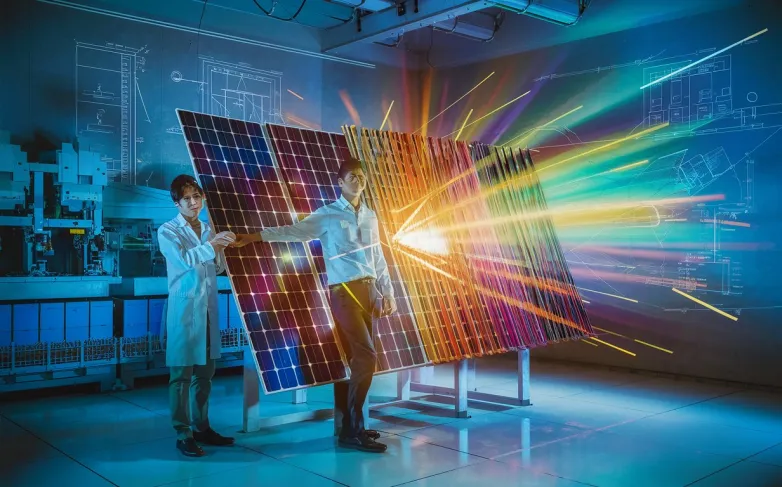Breakthrough: Tin-Lead Perovskite Tandem Solar Cell Efficiency Boosted
- Breakthrough in solar cell technology: Researchers enhance efficiency and stability of all-perovskite tandem cells using innovative CPGCl molecules. More research needed for optimal performance.

Researchers from Wuhan University and South China Normal University have developed a two-terminal all-perovskite tandem solar cell using a tin-lead perovskite material for the top cell. The narrow bandgap of the mixed Sn-Pb perovskites makes them ideal for efficient light harvesting and current-matching with wide bandgap subcells. However, rapid crystallization of Sn perovskites has hindered the efficiency and stability of these cells.
To address this issue, the researchers used CPGCl molecules to modulate the crystallization process and reduce defects in the perovskite absorber. The bottom cell achieved a power conversion efficiency of 23.15% and retained 97.45% of its efficiency after 3,500 hours. The team then used this cell to build a perovskite-perovskite tandem device, which reached a maximum efficiency of 28.20% and retained 95.7% of its efficiency after 2,200 hours.
Despite the high efficiencies achieved, the researchers noted that the efficiency of all-perovskite tandem cells still lags behind theoretical limits. Further research is needed to develop stable interconnection layers that reduce electrical and optical losses in tandem cells to fully exploit the potential of high-efficiency subcells.
How did researchers improve efficiency and stability of all-perovskite tandem solar cells?
- Researchers used CPGCl molecules to modulate the crystallization process and reduce defects in the perovskite absorber
- The bottom cell achieved a power conversion efficiency of 23.15% and retained 97.45% of its efficiency after 3,500 hours
- The perovskite-perovskite tandem device reached a maximum efficiency of 28.20% and retained 95.7% of its efficiency after 2,200 hours
- Despite high efficiencies achieved, researchers noted that efficiency of all-perovskite tandem cells still lags behind theoretical limits
- Further research is needed to develop stable interconnection layers that reduce electrical and optical losses in tandem cells to fully exploit the potential of high-efficiency subcells.
Also read


